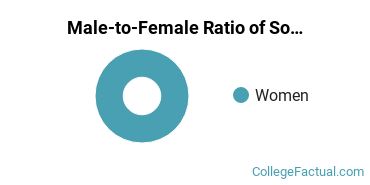 by our College Data Analytics Team
by our College Data Analytics TeamSociology is a concentration offered under the sociology major at Bowling Green State University - Main Campus. Here, you’ll find out more about the major doctor’s degree program in sociology, including such details as the number of graduates, ethnicity of students, related majors and concentrations, and more.
You can jump to any section of this page using the links below:
During the 2019-2020 academic year, part-time graduate students at BGSU paid an average of $778 per credit hour if they came to the school from out-of-state. In-state students paid a discounted rate of $445 per credit hour. The following table shows the average full-time tuition and fees for graduate student.
| In State | Out of State | |
|---|---|---|
| Tuition | $8,017 | $14,009 |
| Fees | $1,814 | $1,814 |
BGSU does not offer an online option for its sociology doctor’s degree program at this time. To see if the school offers distance learning options in other areas, visit the BGSU Online Learning page.
All of the students who received their Doctorate in sociology in 2019-2020 were women.

Of those students who received a doctor’s degree at BGSU in sociology at 2019-2020, none were racial-ethnic minorities*.

| Race/Ethnicity | Number of Students |
|---|---|
| Asian | 0 |
| Black or African American | 0 |
| Hispanic or Latino | 0 |
| Native American or Alaska Native | 0 |
| Native Hawaiian or Pacific Islander | 0 |
| White | 3 |
| International Students | 1 |
| Other Races/Ethnicities | 0 |
*The racial-ethnic minorities count is calculated by taking the total number of students and subtracting white students, international students, and students whose race/ethnicity was unknown. This number is then divided by the total number of students at the school to obtain the racial-ethnic minorities percentage.
More about our data sources and methodologies.